[ad_1]
In case you missed the teaser, the multilingual period saga sees Saif Ali Khan playing the role of the 10-headed demon king, Lankesh, who sports a beard, fierce eyes and a buzz cut. Many called out the filmmaker for the ‘Islamisation of Ravana’. The portrayal of Hanuman with a beard, without a moustache, and dressed in a leather outfit, also attracted criticism for hurting religious sentiments. #BoycottAdipurush and #BanAdipurush became the buzz words of the day on Twitter.
Similar reactions were faced by films like Ajay Devgn and Sidharth Malhotra’s ‘Thank God’, Leena Manimekalai’s ‘Kaali’, Aamir Khan’s ‘PK’, Akshay Kumar’s ‘OMG: Oh My God!’ and more. And then there were films like ‘Karthikeya 2’ and ‘Sita Ramam’ that, even though re-intertrepeted from Hindu epics, were well received by the audience.
So what is it that differentiates these films making them acceptable or objectionable to certain audiences? Should filmmakers take creative liberties while adapting epics for the big screen? Is the audience not ready to accept new ideas and interpretations of religious figures? In today’s #BigStory, we seek perspectives from producers, directors and actors who’ve been long associated with epic mythological films and series in the past. Read on.
Mythology vs history
Ramayana and Mahabharata are two most important legends of Hinduism and it has long been debated whether these are mythological texts or documented versions of India’s history. Three of the most notable names known for their portrayal of pivotal characters in the eighties’ epic series – Ramanand Sagar’s ‘Ramayan’ and BR Chopra’s ‘Mahabharat’, unanimously agree it is wrong to call them mythologies.
Dipika Chikhlia who played the role of Sita in ‘Ramayan’ says, “We have enough evidence to prove that it was not mythology. It is a part of our history.”
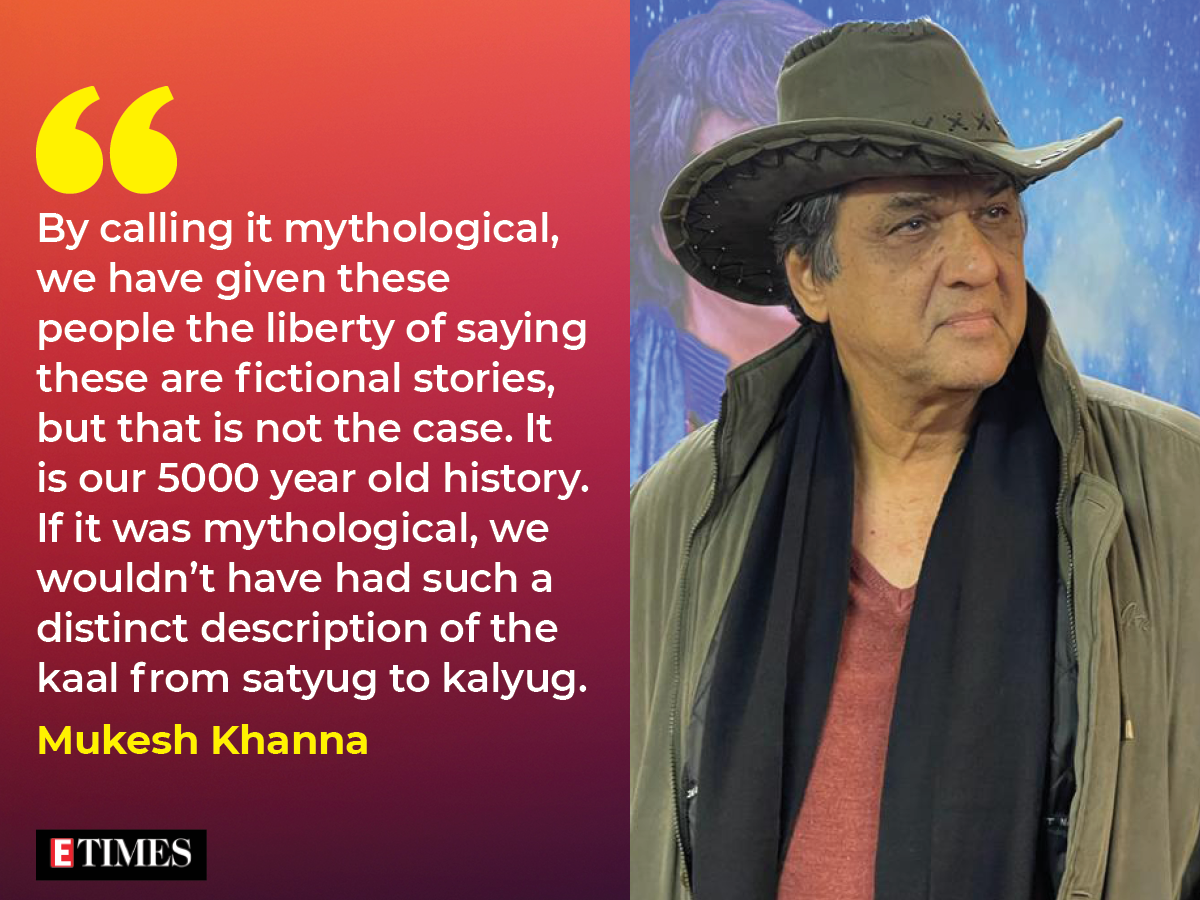
Mukesh Khanna who portrayed Bhishma in ‘Mahabharat’ states that we need to ‘stop calling it mythology’. “By calling it mythological, we have given these people the liberty of saying these are fictional stories, but that is not the case. It is our 5000 year old history. If it was mythological, we wouldn’t have had such a distinct description of the
kaal from
satyug to
kalyug,” he says.
Former actor and vice-chancellor of Pandit Lakhmi Chand State University of Performing and Visual Arts Gajendra Chauhan played Yudhisthir in ‘Mahabharat’. He says archaeological surveys have proved it is our history. “The moment you change these characters that are seen as religious figures, the audience will not accept it. Example are BR Chopra and Ramanand Sagar’s series – none of the other versions of ‘Mahabharat’ or ‘Ramayan’ made after these have been accepted so widely for the same reason.”
Why the objection?
India has a dedicated statutory film certification body in the Ministry of Information and Broadcasting – the Central Board of Film Certification (CBFC) – that screens and regulates the public exhibition of films under the provisions of the Cinematograph Act 1952. Uday Shankar Pani, a panel member of the CBFC, explains to ETimes how the movies are censored. “There is a panel that watches the film in the presence of a censor board official,” he says. “The point of view about a film varies from panel to panel. The censor board officer makes sure that the rule book is followed to make sure no sentiments are hurt.”
The ‘Adipurush’ teaser was perhaps cleared by a majority on the panel. Pani explains what may be done after the public uproar in this case. “If somebody writes to the Censor Board, then it is taken to the review committee. Thereafter, a panel with a larger number of officers then goes through the content again. If required, we get specialists or experts for their opinion too. Recently there was a film on the 1921 massacre in Kerala, for which a historian was called to ensure whatever is shown was real and not a work of fiction.”
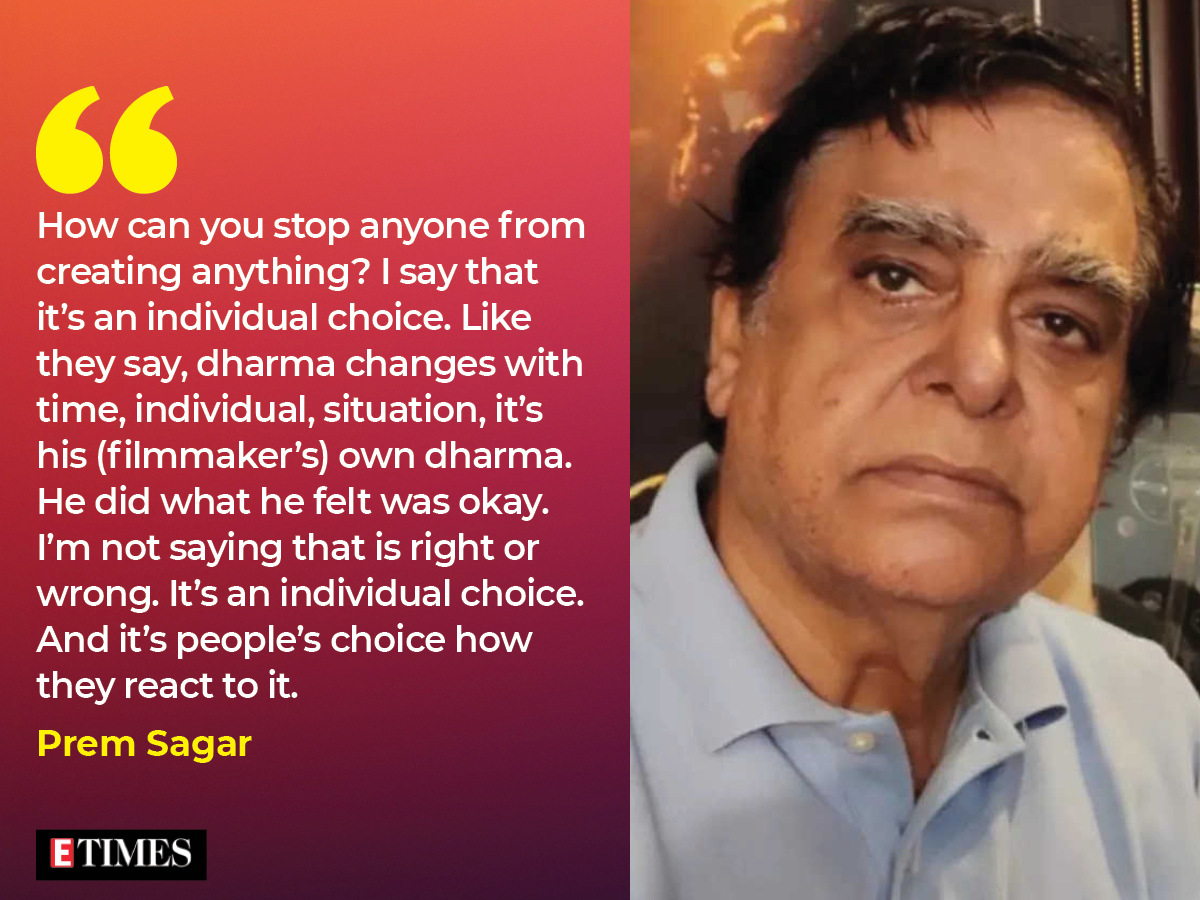
Ramanand Sagar’s son Prem Sagar reacted to the objection that ‘Adipurush’ is facing. “How can you stop anyone from creating anything?” he questions. “I say that it’s an individual choice. Like they say,
dharma changes with time, individual, situation, it’s his (filmmaker’s) own
dharma. He did what he felt was okay. I’m not saying that is right or wrong. It’s an individual choice. And it’s people’s choice how they react to it.”
Among the many who did not agree with the modern touches to the deities’ looks is Sunil Lahri who played Lakshman in ‘Ramayan’. “The kind of look that they have given to Ram and Ravana is not digestible to the audience because many people have seen the same characters in Ramanand Sagar’s ‘Ramayan’. People have seen Ram, Sita, Lakshman, Ravana and they should not spoil that image,” he told PTI.
Nitish Bharadwaj’s portrayal of Lord Krishna in BR Chopra’s ‘Mahabharat’ has been adored by generations. He believes filmmakers should not push the audience too far. “Indian audiences did show acceptance of Hindu God’s comic depiction in Raju Hirani’s PK. You think Raju could have done this with a God or a Saint of any other faith? Audiences anywhere in the world are also human beings, with their beliefs and influences of socio-political environment but the filmmakers should not push the audience too far, just because now the best VFX technology is available in India,” he says.
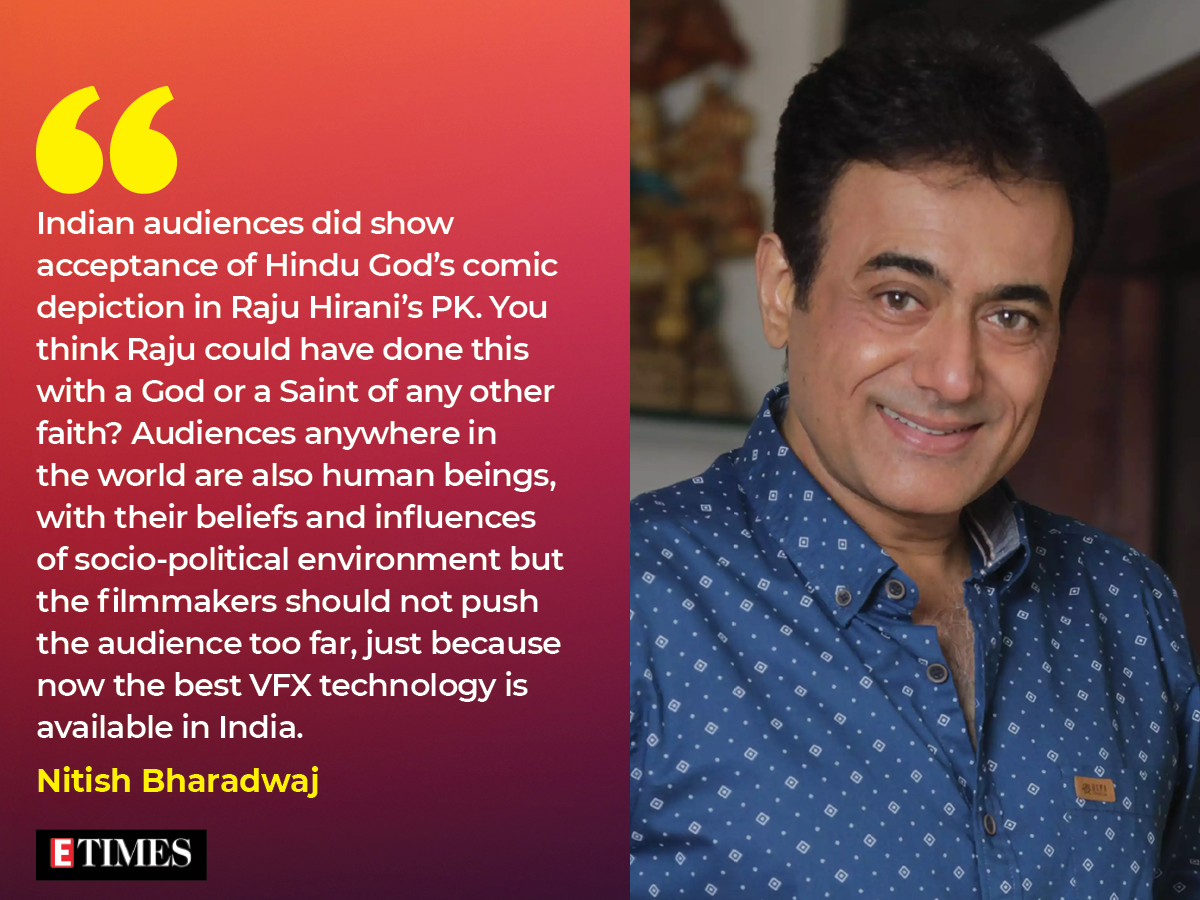
Mukesh Khanna and Gajendra Chauhan echo the sentiments. “They made ‘Kalyug’ as an interpretation of Mahabharata. But they never said they are replicating it. Epics like Ramayana and Mahabharata cannot be made with technology. Some people say, ‘Who are you to object when the Censor Board has passed it?’
Censor Board koi hamara mai baap nahi hai. It’s not a Supreme Court. Make 1000 stories, but do not make fun of our deities. Then your film will work. Look how ‘Karthikeya 2’ worked even when the boycott culture was here. If you use Hindu characters, show them respect like they do in the South films,” says Khanna.
“Whenever Ram Leela happens, Ram is seen as Ram only. So while there is freedom of speech and expression, you cannot hurt anyone’s sentiments or cross lines. These filmmakers are toying with these characters, and they have failed each time. I have played about 150 characters in my four decade long career. So I believe, Lord Shiva should be shown as Shiva, Lord Vishnu should be shown as Vishnu. Likewise Raavan has also been an integral character of our history. If you try to change his look and ambience, the audience will never accept it,” adds Chauhan.
Dr Chandraprakash Dwivedi has directed multiple epics like ‘Chanakya’ and ‘Mrityunjay’ and is the creative producer of the upcoming movie ‘Ram Setu’. He believes it’s the right of a director to take inspiration from various sources. “Whether he or she is successful or unsuccessful in delivering, is another question,” he says. “All our references for cinema and web series, presently, unfortunately come from the West. This is the central focus of all the discussions at various channels and web platforms. We already have a colonial hangover and now we are trying to ape the West in our treatment of
puranic and historical characters. That is the problem. Some of the directors are not able to decide what direction they want to go in. People want to see Shri Ram through the lens of great sage Valmiki and Mahakavi Goswami Tulsidas. They want to see images that they have seen in our sculptures, our calendar and Indian art. Even after 35 years, our point of reference for Ramayan is Ramanand Sagar’s cinematic epic ‘Ramayan’. Many have made series on ‘Ramayan’ in the past, but the point of reference is the late Ramanand Sagar’s work even today. As filmmakers, we need to fulfill the aspiration of Indian audiences and recreate the images which are closer to the images present in Indian consciousness. We don’t need to Americanise, but Indianise the images. For that study, intent, dedication, emotion and absolute faith in our culture is the most important requirement.”
Producer director Siddharth Kumar Tewary has created various mythological shows like ‘Mahabharat’ (2013), ‘Suryaputra Karn’, ‘Karmaphal Daata Shani’, ‘Ram Siya Ke Luv Kush’, ‘Mahakali — Anth Hi Aarambh Hai’ and most recently ‘RadhaKrishn’. He says, “We are a diverse country with a varied set of viewers. It’s about who we are talking to as a viewer, who is the primary audience for the content. If we are telling a story to a larger mass of our country then it needs to be told in a way that meets their expectations. If it’s for a niche audience, then it has a similar approach. Bracketing everyone under one umbrella would be tough, eventually we are telling a story for an audience. What’s most important is the interpretation as that’s what the viewer wants to see. It’s like in our school days we used to be taught by our teachers and then we had to write our own views about the same in the exam, we are graded on the basis of our interpretations and understanding rather than what’s exactly written in the books.”
Should filmmakers take creative liberties?
As Sunil Lahri admitted in a media interaction, unlike historical figures, there’s no frame of reference to design the mythological idols. We have grown up watching set images of these characters all these years. So as Om Raut tried to break the conventional image of Raavan, it perhaps did not meet the expectations of the people. Speaking to ETimes earlier about chances of misrepresentation and hurting sentiments with ‘Adipurush’, Raut had said, “I enjoy doing the right research and keeping my head and heart in the right place and looking at a particular historical event or a personality in the right spirit. I feel that when you have your heart in the right space and your intentions are right, you want to keep the sanctity of the historical events intact, and you look at everything with a pure mind, then you shouldn’t worry much about anything going wrong. What I would like to think about is how rightly I work and how pure I keep my work place.”
When Prem Sagar saw the teaser of ‘Adipurush’, he felt everyone has a right of showing their creativity. “He (Om Raut) hasn’t called it Ramayan. He has the right to do it. It is someone’s individual choice what to do and not to do. If I had got a project like this, I wouldn’t do it because of my upbringing and culture,” he said.
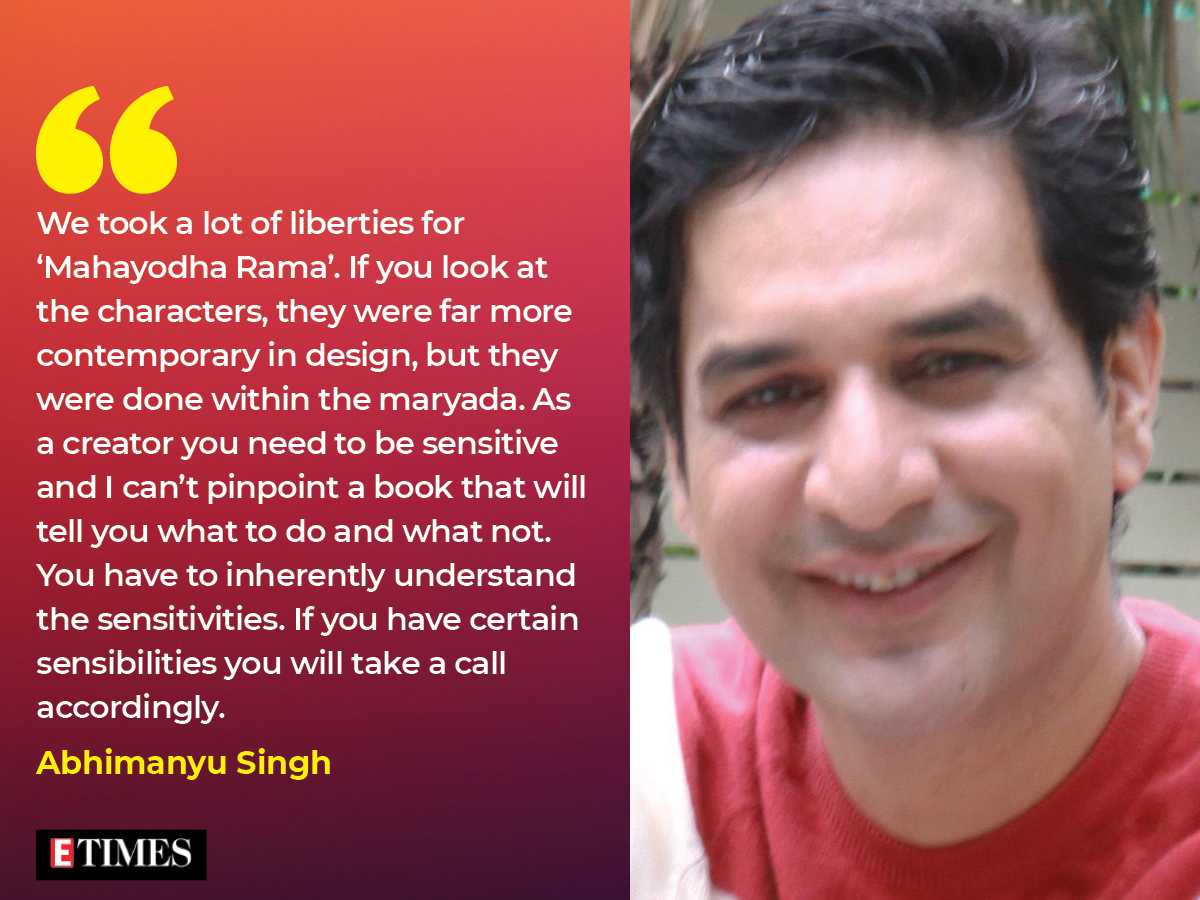
Producer Abhimanyu Singh has created epic series like ‘Sankatmochan Mahabali Hanuman’, ‘Vighnaharta Ganesha’, ‘Dharm Yoddha Garud’ among others. His epic animation movie ‘Mahayodha Rama’ even won a National Award. He says, “There are sensibilities and sensitivities. Sensibilities are the creative liberties that you take and sensitivities are how people are sensitive about gods and goddesses and historical characters. We took a lot of liberties for ‘Mahayodha Rama’. If you look at the characters, they were far more contemporary in design, but they were done within the
maryada. As a creator you need to be sensitive and I can’t pinpoint a book that will tell you what to do and what not. You have to inherently understand the sensitivities. If you have certain sensibilities you will take a call accordingly. And that is left to the interpretation of every creator.”
“Everyone wants to present the story in a new way, from their point of view and interpretation. But our audience does not accept the change,” says Gajendra Chauhan. “Why has no one been able to compete with ‘Ramayan’ and ‘Mahabharat’ made 35 years ago? Because Ramanand Sagar and BR Chopra presented those very close to reality. The reference back then was history books and the writers presented them understanding the sentiment of the audience. Today, the audiences’ sentiments are not being respected at all.”
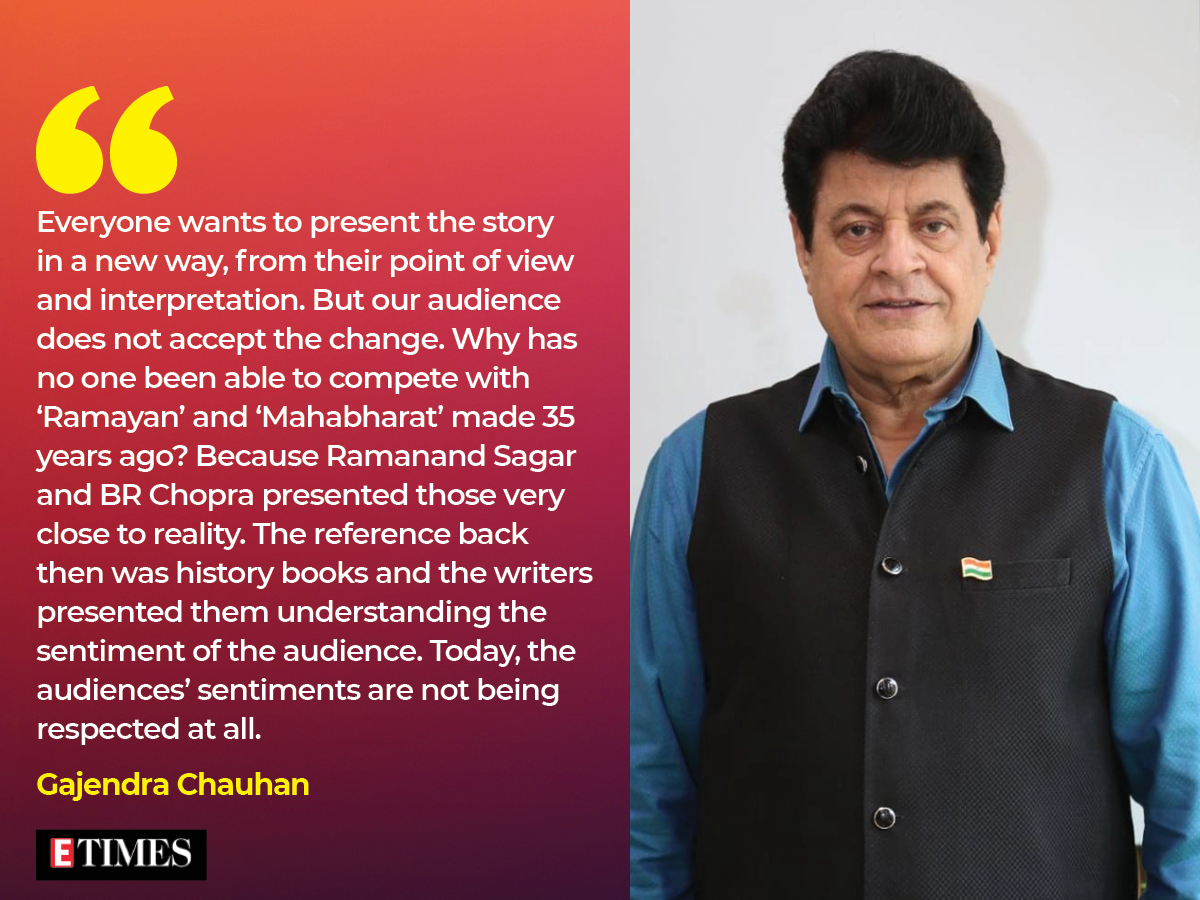
Dipika Chikhlia found the ‘Adipurush’ teaser very different from the Ramayan that Indians have seen earlier and grown up with. “You have to draw the lines while taking creative liberties,” she says. “When you are talking about history, you cannot interpret and change it. You cannot change names and faces, you cannot change the era. When you are projecting history, try to maintain as much historical evidence as you have. Distorting history is not right.”
“These people talk about freedom of expression, they are pseudo intellectuals and communist minded,” says Mukesh Khanna. “They don’t believe in gods. I do not understand what they have against the Hindu religion that they mock it again and again. Look at what they did in ‘PK’, ‘Taandav’. They have no right to do this with the Hindu religion. If it’s about freedom of expression, why not take liberties with other religions? Copy whoever you want, call it ‘Adipurush’, but don’t call it Ramayan.”
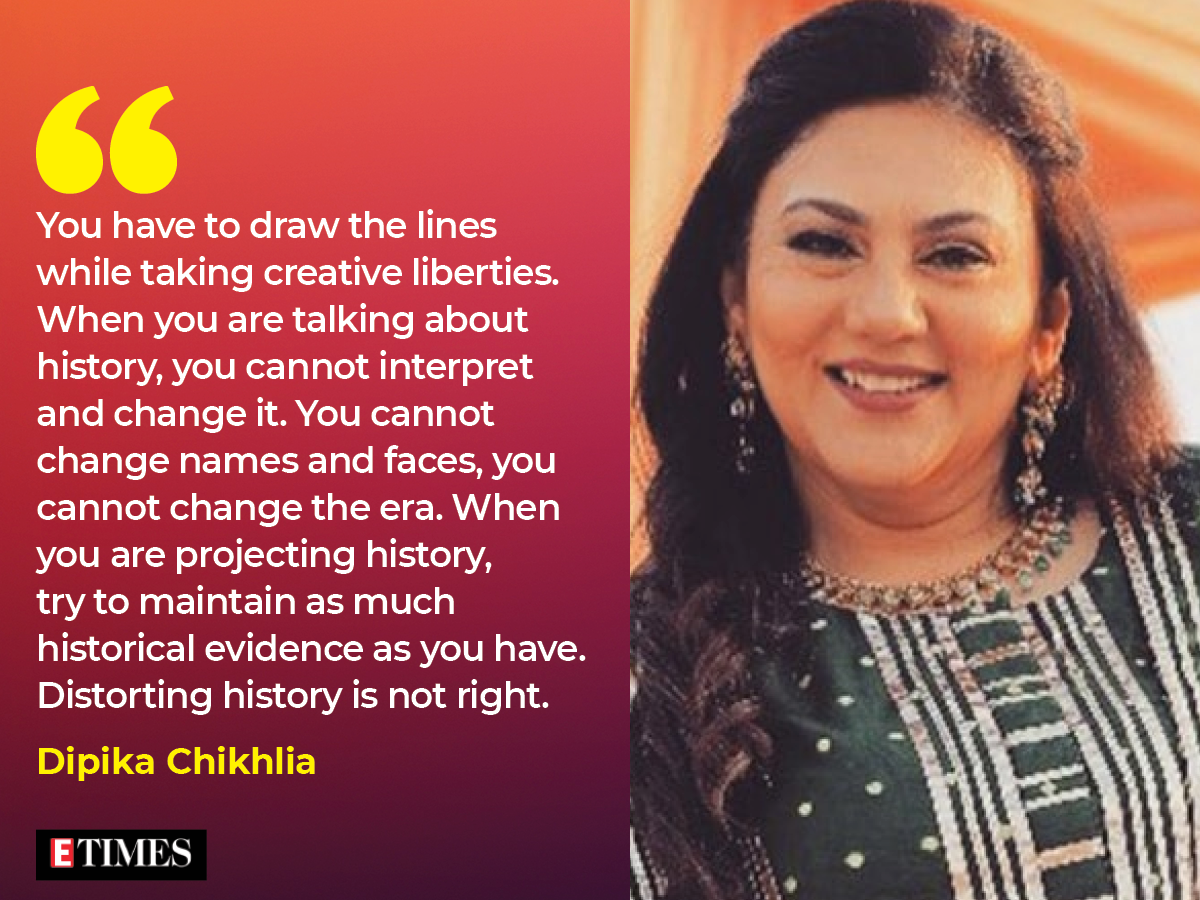
Nitish Bharadwaj believes the young Indian audience expects all epics to be like Western action films and shows. “This has been a decades-long debate and the filmmakers are pandering to the audience’s demands,” he says. “But who decides what exactly the audience wants? It is the responsibility of the filmmakers to also understand the strength of our Indian ethos, the essence of our epics and the great scientific knowledge cleverly woven within those stories by our visionary sages. If we blindly try to ape the Western action films while making our stories, we may lose an opportunity to create some original content, which can be quite different from Hollywood.”
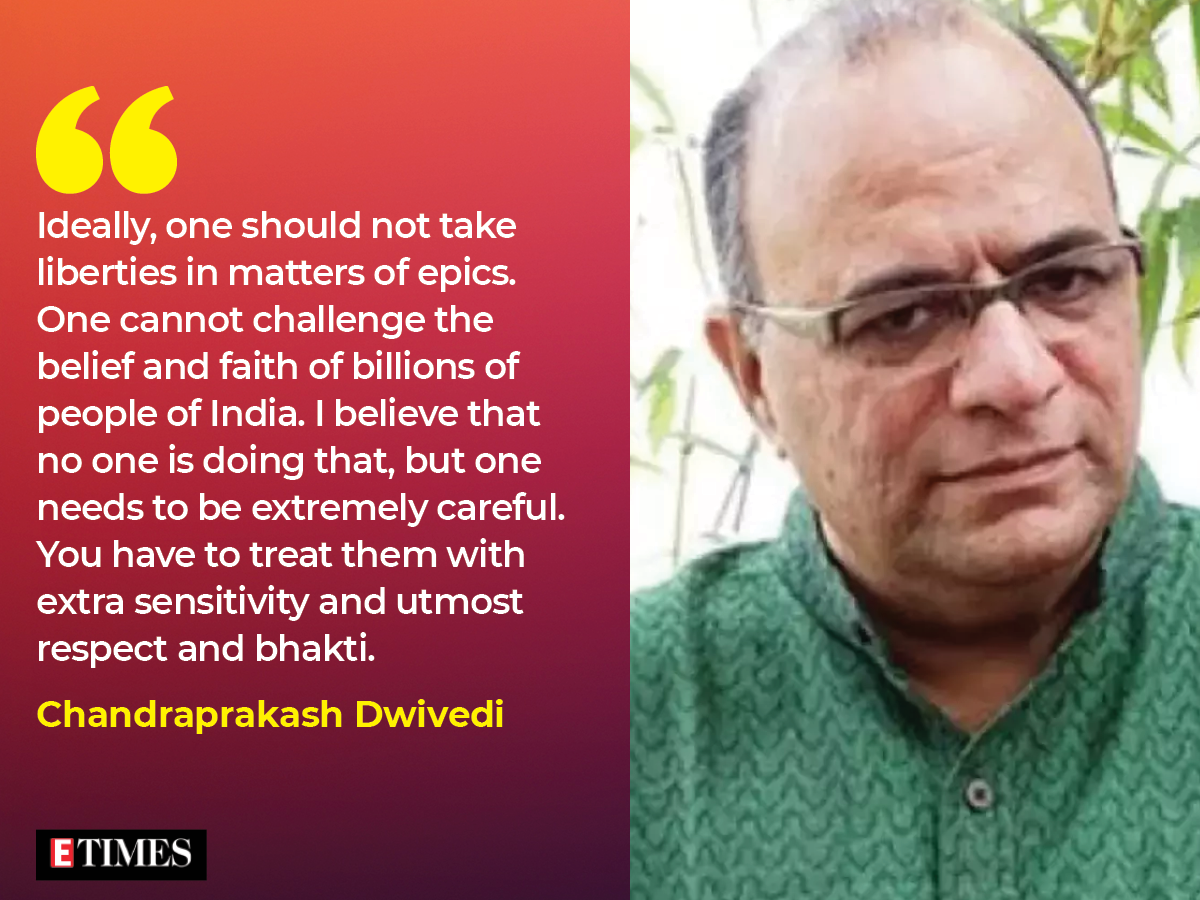
Chandraprakash Dwivedi believes we have plenty of sources of Ram Katha and there are regional variations as well. “Where there is uncertainty or no mention of things that one wishes to recreate, one can use imagination,” he says. “And knowing that it is sensitive for our nation, our civilisation, we have to be very careful. Having said this, I will say variations are always there. What is important is the intent. We have several versions of Ram Katha and Ram Leela in our country. Whenever we see a folk form of Ram Leela, we do not evaluate the artistes in terms of their craft but we see their devotion and love for our national heroes and our epics. Ideally one should not take liberties in matters of epics. One cannot challenge the belief and faith of billions of people of India. I believe that no one is doing that, but one needs to be extremely careful. You have to treat them with extra sensitivity and utmost respect and bhakti.”
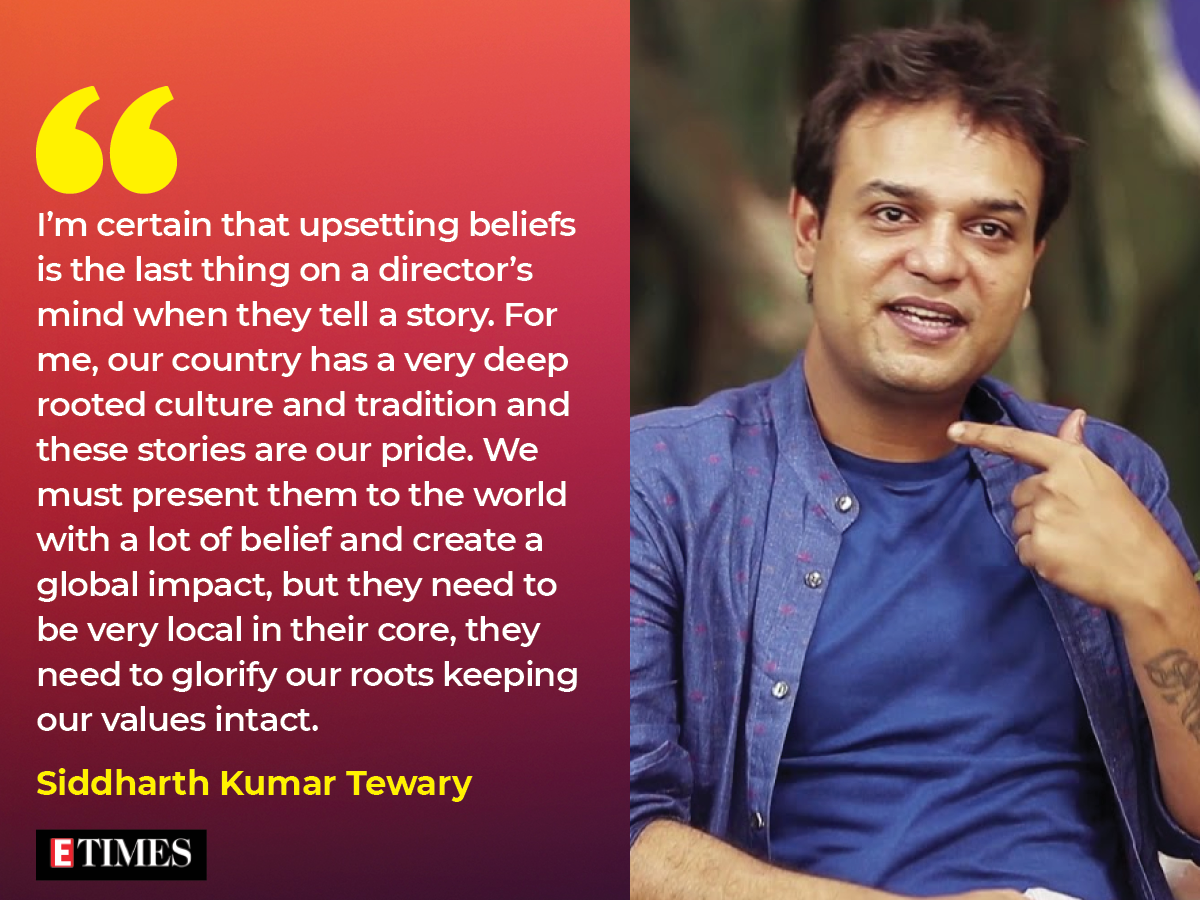
Siddharth Kumar Tewary too believes we need to know where to draw a line in the name of creative liberty when we are telling such an epic tale. “I’m certain that upsetting beliefs is the last thing on a director’s mind when they tell a story. For me, our country has a very deep rooted culture and tradition and these stories are our pride. We must present them to the world with a lot of belief and create a global impact, but they need to be very local in their core, they need to glorify our roots keeping our values intact. It’s a local story which needs to be told in a global way,” he concludes.
[ad_2]
Source link

